|
Dedication : St Kentigern Simon Jenkins: Excluded Principal Features : Idiosyncratic Alabaster Font; Gosforth Cross Reproduction: Hogback |
||
|
|
|
|||||||||||||||||
|
|
|
The Font |
||||||||
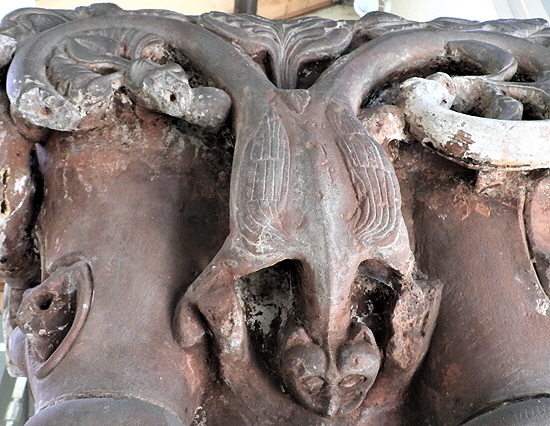 |
||||||||
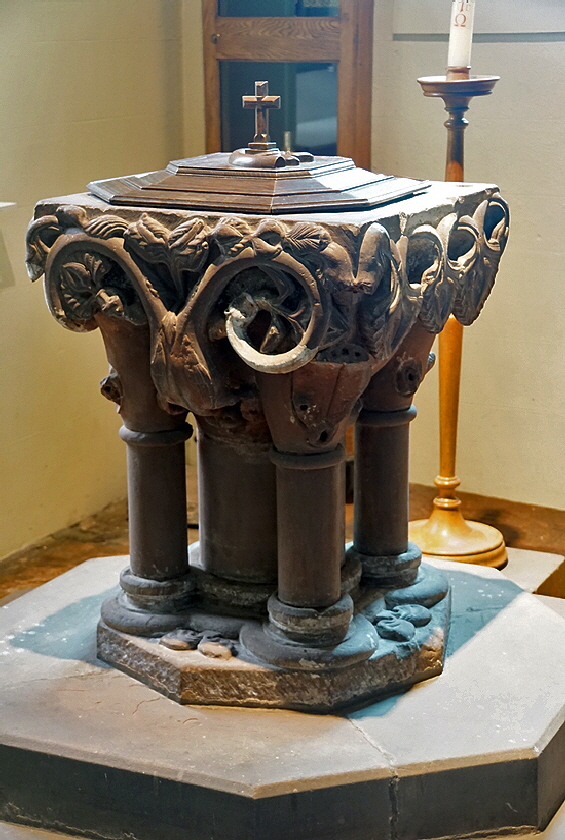 |
||||||||
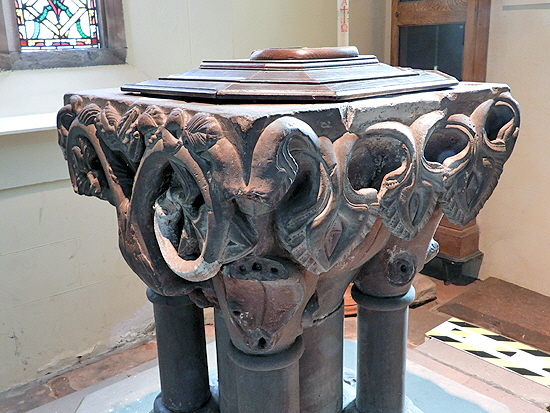 |
||||||||
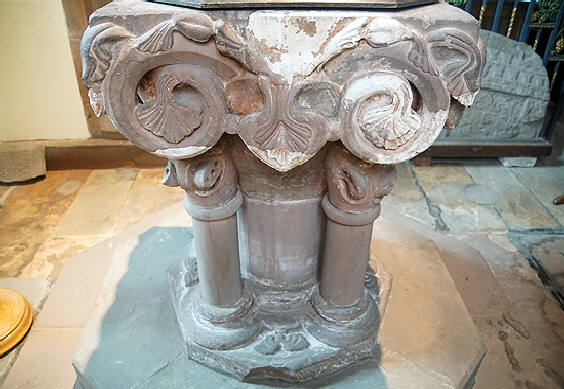 |
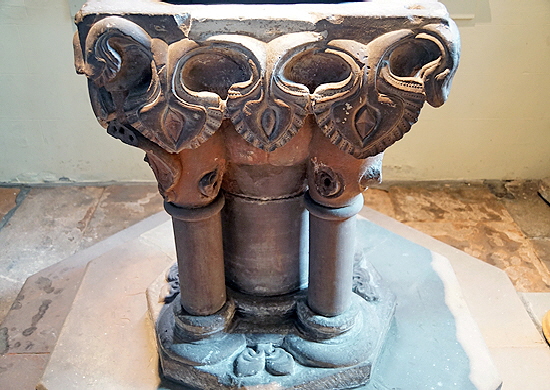 |
|||||||
|
The font is a real showpiece. Although many Norman fonts have the most accomplished carvings (although many more are really crude!) this font and the one at nearby Crosscanonby show what could be achieved in the softer material of alabaster. This heavily foliated form is reminiscent of Early English (that is, thirteenth century) fonts. What really stands out, however, is the huge inverted bat-like carving (top right - photo courtesy Bonnie Herrick). This is decidedly not typical of the thirteenth century, leading me to conclude that it is either late Norman or very early in the thirteenth century, dating supported by the Corpus of Romanesque Sculpture in Britain and Ireland (CRSBI) website. CRSBI also, like myself, suspect that the two fonts were carved by same man. This dating makes these two fonts quite probably the earliest use of alabaster in any English parish church. Moreover, the alabaster almost certainly not from the usual East Midlands counties of Derbyshire, Staffordshire and Nottinghamshire but from the coastal alabaster beds at Barrowmouth near Workington in Cumbria or else from a long-forgotten mediaeval quarry in the vicinity.. The alabaster was probably not mined or quarried but found as surface outcrops. This would explain why we find only these two examples in Cumbria: one can readily envisage a small outcrop being found and entrusted to a single mason to work upon. These fonts are almost certainly, again, the first known use of Cumbrian alabaster. This early dating is seen as problematical in some quarters, See my discussion on the footnote for Crosscanonby. |
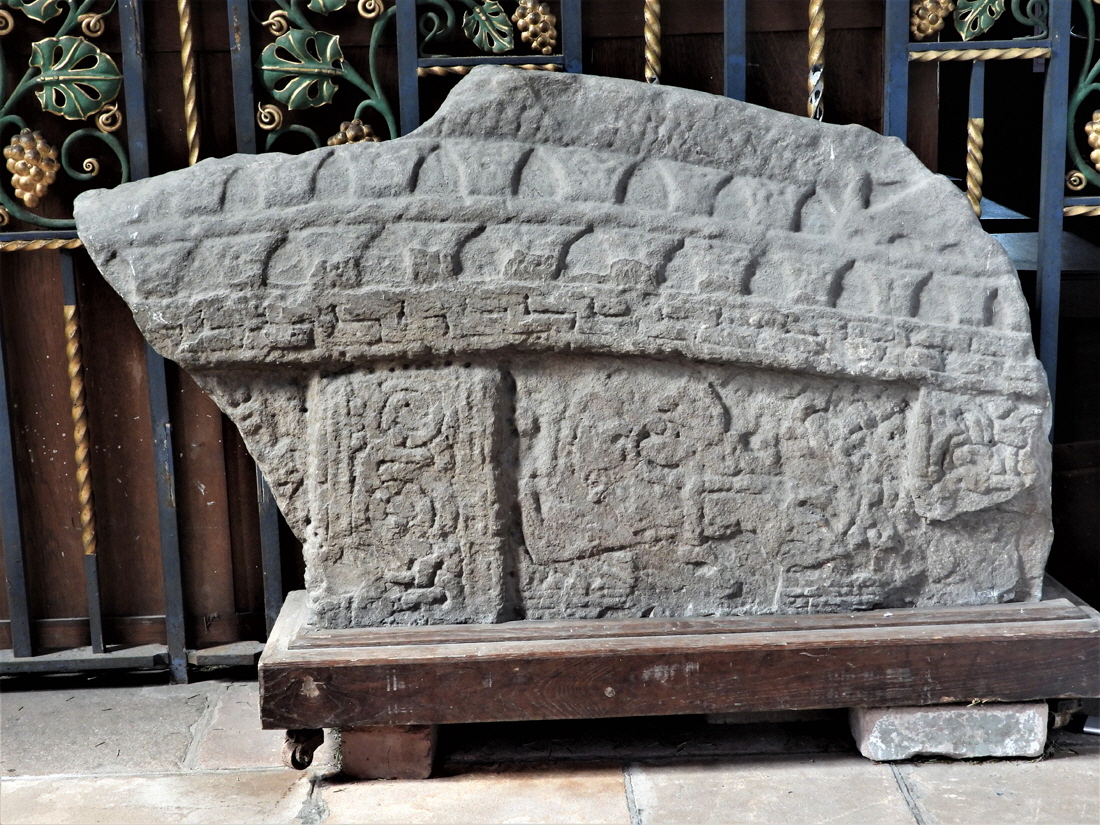 |
||||||||||||||||||||||||||||
|
The Aspatria hogback. It is hard to make out any detail, the piece having doubtless deteriorated over centuries of exposure to the elements. WG Collingwood was the pre-eminent expert on Northumbrian sculpture and his “filling in the gaps” here revealed a very ornate piece of sculpture. A vertical band of interlaced decoration to the left is the clearest of the decoration. The main central piece was, according to Collingwood’s interpolation, an animal entwined with interlace work. Most interesting to myself, he sees the right hand design as a “circle with interlaced arcs” design, representing Plato’s “macrocosm” about which I have written extensively on these pages as a result of the work by the late Mary Curtis Webb. I believe this to be a device introduced to England by the Norse and this reinforces my belief. How did Collingwood come up with these designs? I can only surmise that he used very careful “rubbings” of the stones to bring out the detail of the vestigial designs that is not really visible from looking at the stones themselves. |
||||||||||||||||||||||||||||
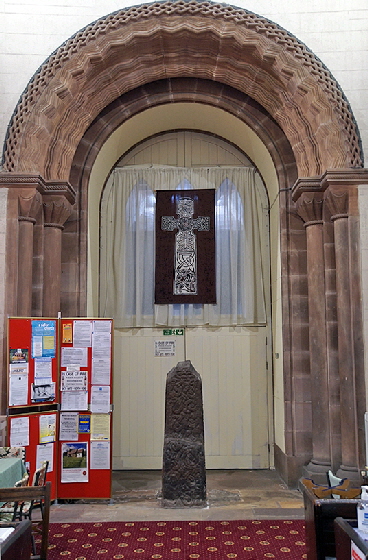 |
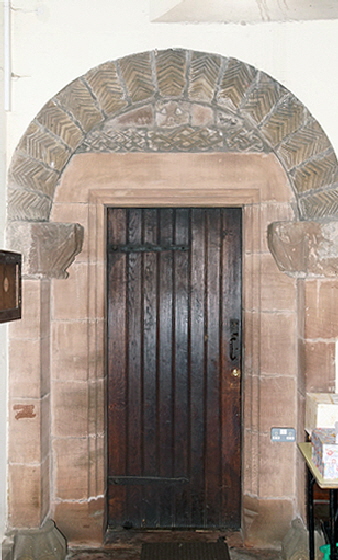 |
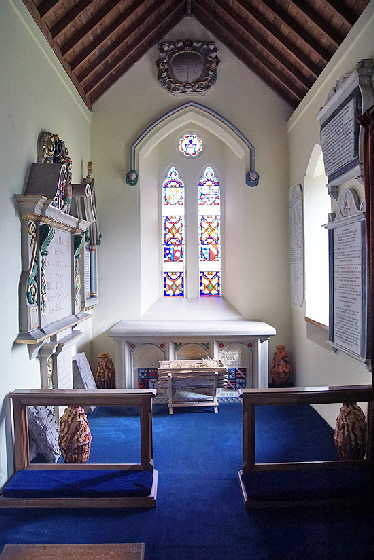 |
||||||||||||||||||||||||||
|
Left: The tower arch appears to be original Norman. Below it is the fragment of a Scandinavian cross. Centre: The south door also looks substantially Norman but It has clearly been reset from the original aisle-less south side. There is a peculiar vestigial tympanum. The horizontal interlace course looks like it might have been the original lintel. Above that there seems to be a fragment of a small pre-Conquest cross head. Right: The south chapel houses memorials to the Musgrave family. The family name is now widespread but the Cumbrian line was one of the fourteen notorious reiver clans. The family marauded, rustled, thieved and raided across the English and Scottish borders from the thirteenth until the late seventeenth century, |
||||||||||||||||||||||||||||
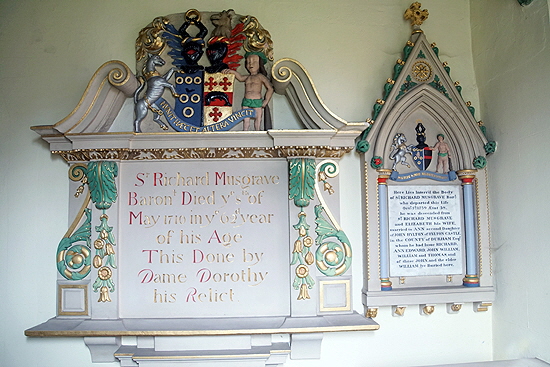 |
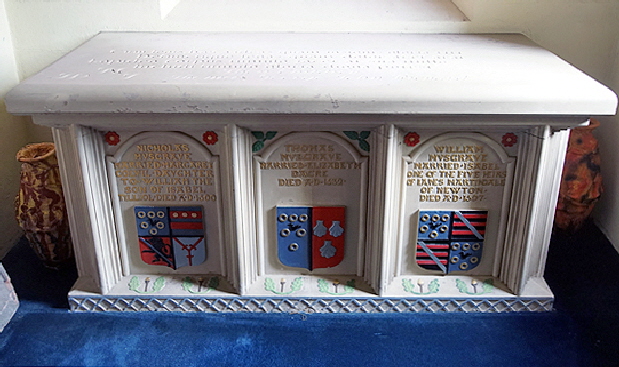 |
|||||||||||||||||||||||||||
|
Musgrave monuments in the south chapel. |
||||||||||||||||||||||||||||
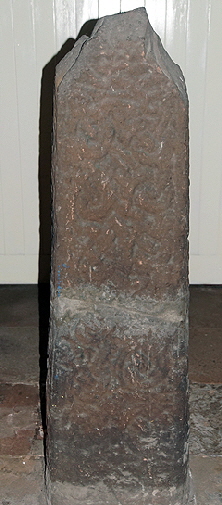 |
 |
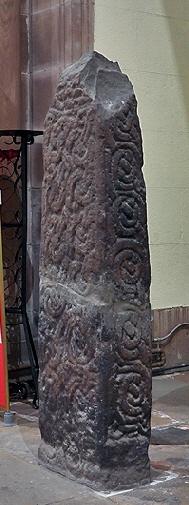 |
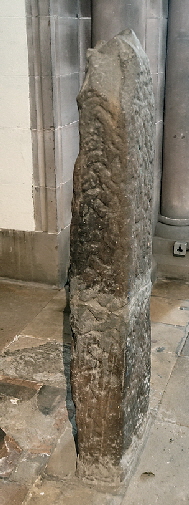 |
|||||||||||||||||||||||||
|
Aspects of the Aspatria Scandinavian style cross. Collingwood’s interpolation has a stylised animal at the foot on one side (second left) amongst a mass of Scandinavian style ring chain designs. The church has done its own reimagination, The two are so different that I have decided is is not worth reproducung either of them here! |
||||||||||||||||||||||||||||
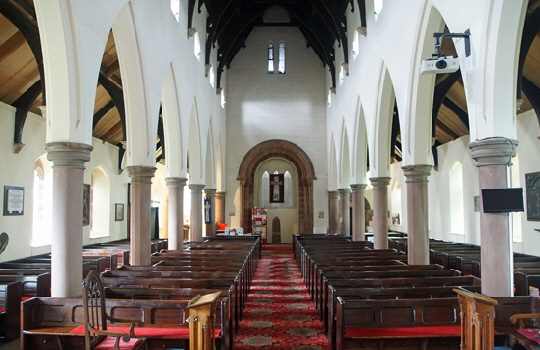 |
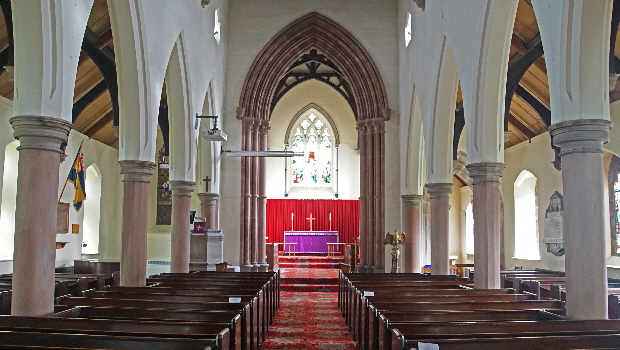 |
|||||||||||||||||||||||||||
|
Left: The view to the west and the Norman tower arch. Right: The view to the east. The chancel arch is a noble one, perhaps the best feature of the otherwise uninspiring Victorian reconstruction. |
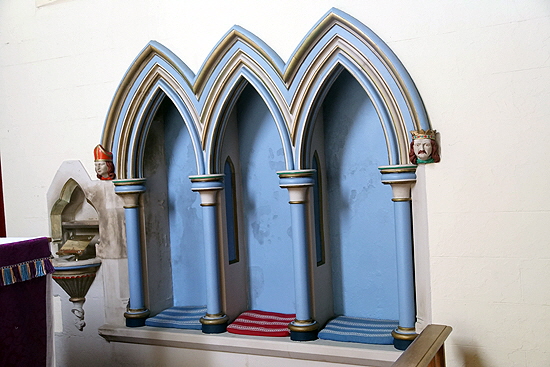 |
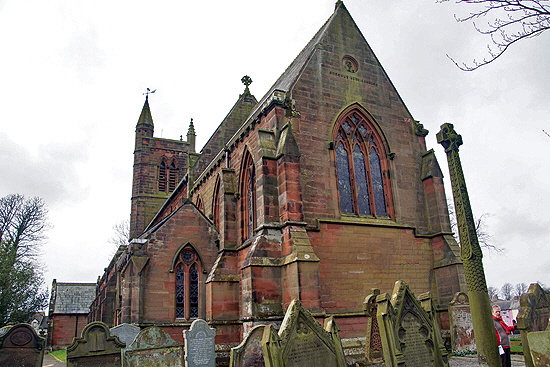 |
|||||||||||||||||
|
Left: This rather pretty triple sedilia (with matching piscina) in the chancel is, of course, another Victorian confection complete with heads of a bishop and of a king. It is a whimsical thing, a throw back to mediaeval church furnishing and, with its inherent discomfort, surely not much appreciated by the clergy! Right: The church from the south east. In the foreground is the reproduction of the Gosforth Cross. |
||||||||||||||||||
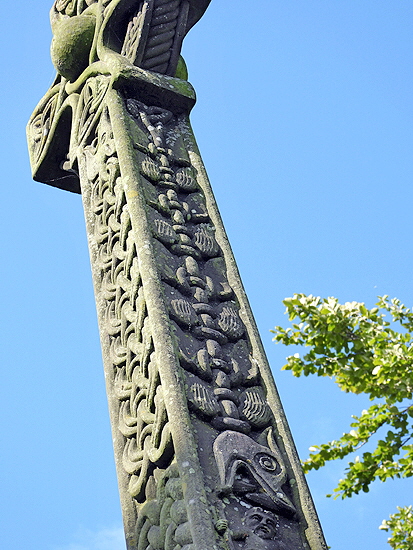 |
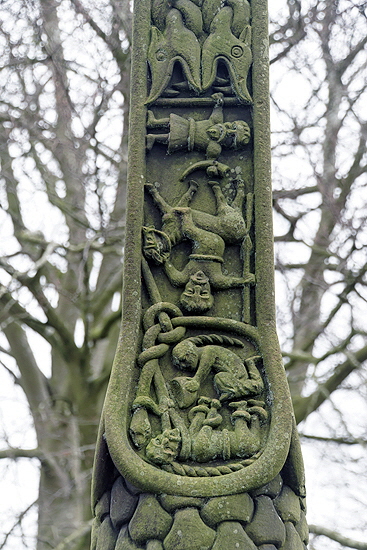 |
|||||||||||||||||
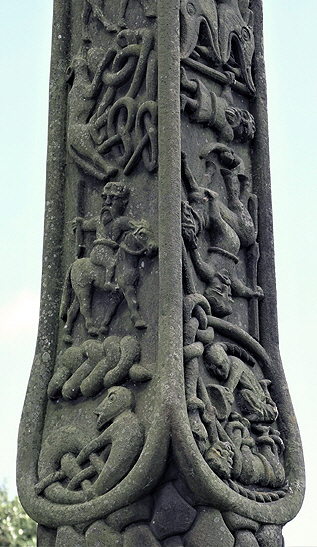 |
||||||||||||||||||
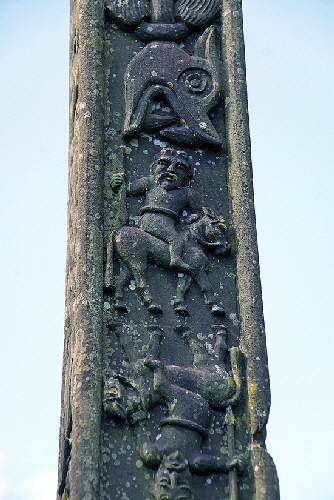 |
 |
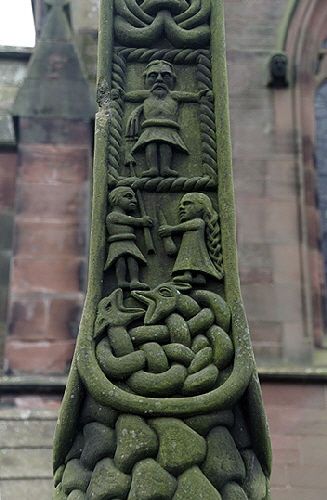 |
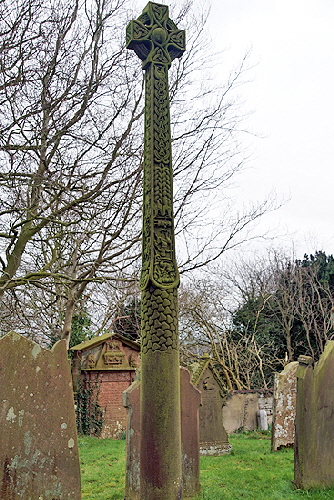 |
|||||||||||||||
|
Asoects of the reproduction of the Gosforth Cross. This is an absolutely invaluable way to see the Gosforth Cross as it originally was. I have writeen extensively about it so I don’t intend to add notes here, Please follow the link below. There are other hogbacks to be seen there too. (Some photos by courtesy of Bonnie Herrick) |
 |
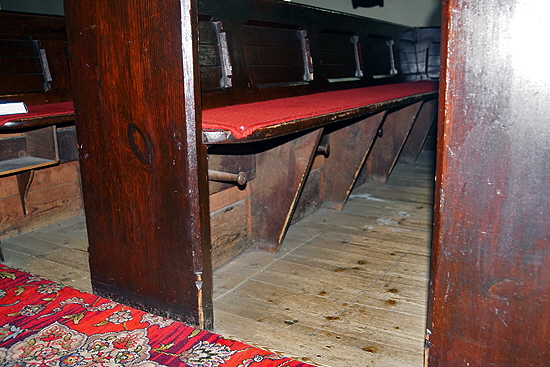 |
||||
|
Left: The Victorian faux Norman west door. I have to say that this was not badly done at all. Right: More English whimsy. Beneath the benches are pegs upon which the gentry were able to hang that all-important status symbol, the top hat. The carpet is by CarpetRight... |
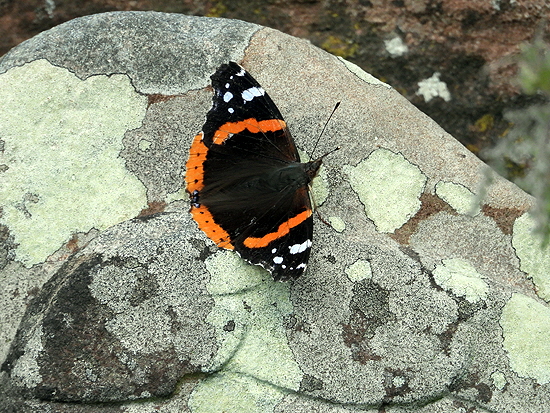 |
|||
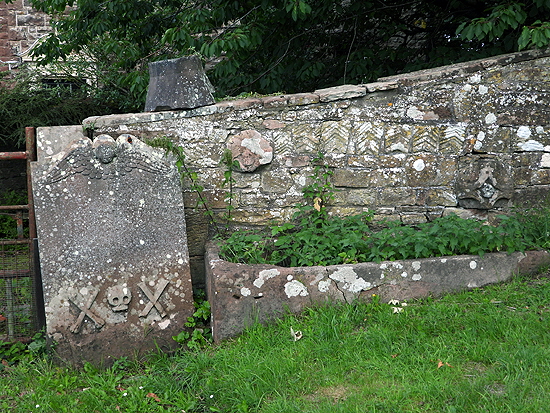 |
|||
|
Left: A wonderful little accumulation of stone in the churchyard: a tombstone with skull and crossbones, a stone coffin and, set into the wall, a number of stones with chevron mouldings from the Norman church. Right: Bonnie Herrick captured this delightful shot of a Red Admiral butterfly posing on the gravestone. |
|
|
||||||||||||||||||||
|
|
|